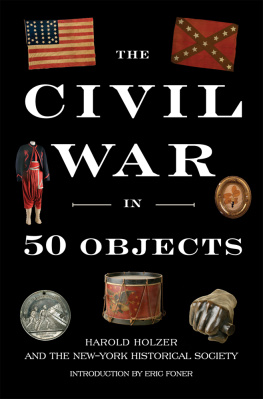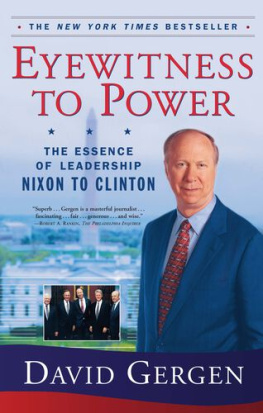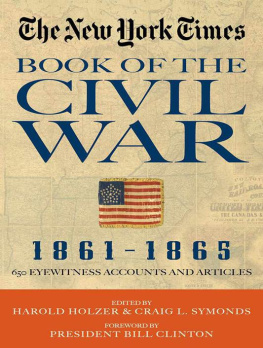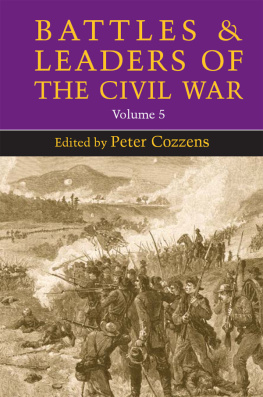Harold Holzer (Ed.) - Hearts Touched by Fire: The Best of Battles and Leaders of the Civil War
Here you can read online Harold Holzer (Ed.) - Hearts Touched by Fire: The Best of Battles and Leaders of the Civil War full text of the book (entire story) in english for free. Download pdf and epub, get meaning, cover and reviews about this ebook. year: 2011, publisher: Modern Library, genre: History. Description of the work, (preface) as well as reviews are available. Best literature library LitArk.com created for fans of good reading and offers a wide selection of genres:
Romance novel
Science fiction
Adventure
Detective
Science
History
Home and family
Prose
Art
Politics
Computer
Non-fiction
Religion
Business
Children
Humor
Choose a favorite category and find really read worthwhile books. Enjoy immersion in the world of imagination, feel the emotions of the characters or learn something new for yourself, make an fascinating discovery.

- Book:Hearts Touched by Fire: The Best of Battles and Leaders of the Civil War
- Author:
- Publisher:Modern Library
- Genre:
- Year:2011
- Rating:4 / 5
- Favourites:Add to favourites
- Your mark:
- 80
- 1
- 2
- 3
- 4
- 5
Hearts Touched by Fire: The Best of Battles and Leaders of the Civil War: summary, description and annotation
We offer to read an annotation, description, summary or preface (depends on what the author of the book "Hearts Touched by Fire: The Best of Battles and Leaders of the Civil War" wrote himself). If you haven't found the necessary information about the book — write in the comments, we will try to find it.
Hearts Touched by Fire: The Best of Battles and Leaders of the Civil War — read online for free the complete book (whole text) full work
Below is the text of the book, divided by pages. System saving the place of the last page read, allows you to conveniently read the book "Hearts Touched by Fire: The Best of Battles and Leaders of the Civil War" online for free, without having to search again every time where you left off. Put a bookmark, and you can go to the page where you finished reading at any time.
Font size:
Interval:
Bookmark:

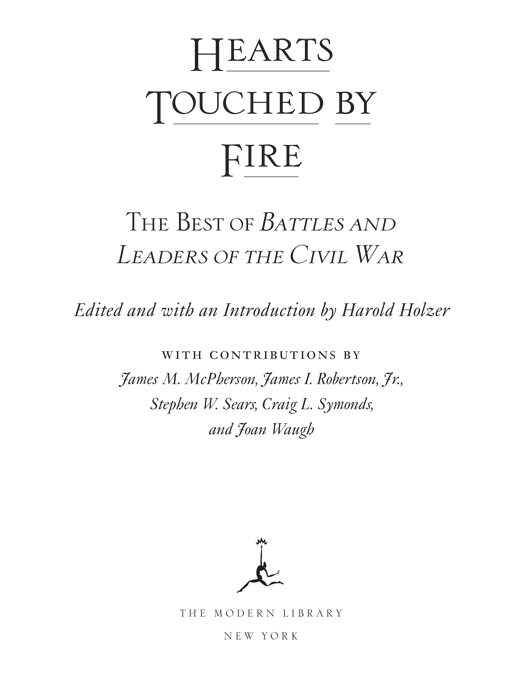
A 2011 Modern Library Hardcover Original
General introduction, editorial commentary, and chronology
copyright 2011 by Harold Holzer
Compilation copyright 2011 by Random House, Inc.
1861 part introduction copyright 2011 by Craig L. Symonds
1862 part introduction copyright 2011 by Stephen Sears
1863 part introduction copyright 2011 by James M. McPherson
1864 part introduction copyright 2011 by Joan Waugh
1865 part introduction copyright 2011 by James I. Robertson
All rights reserved.
Published in the United States by Modern Library, an imprint of The Random House Publishing Group, a division of Random House, Inc., New York.
M ODERN L IBRARY and the T ORCHBEARER Design are registered trademarks of Random House, Inc.
The essays in this work, some of which appeared over the years in The Century Magazine, were originally published in the various volumes of Battles and Leaders of the Civil War, edited by Robert Underwood Johnson and Clarence Clough Buel and published between 1887 and 1888.
eISBN: 978-0-679-60430-3
www.modernlibrary.com
v3.1
I N MEMORY OF J OHN Y. S IMON,
A LEADER WHO LED BATTLES
AND KNEW THE WARS GREATEST GENERAL BEST OF ALL
Harold Holzer
The most popular, influential, and enduring collection of first-person Civil War memoirs ever published could trace its origins to a good-natured interoffice debate between two young magazine editors.
In July 1883, just a few days after the twentieth anniversary of the Battle of Gettysburg, Clarence Clough Buel of The Century Magazine initiated a lively discussion about the war with the colleague who sat at the next desk, fellow assistant editor Robert Underwood Johnson. Both men were barely thirty. Buel was a scrappy New Yorker and alumnus of the New York Tribune staff; Johnson was a young Century veteran who could trace his roots to both a Confederate general, Bushrod Johnson, and a Union politician, Indiana governor Oliver P. Morton.
The question they argued that fateful day was: Which Civil War engagement deserved to be ranked as the bloodiest battle of them all? Buel contended that the grewsome [sic] distinction belonged to Chickamauga, Johnson seconded the notion. A few days later, Buel pitched the idea to his boss, editor in chief Richard Watson Gilder.
The widely read magazine, which had begun its life as Scribners Monthly, had just published two articles recalling a major prewar eventJohn Browns 1859 Harpers Ferry raidfrom pro-Brown and anti-Brown points of view. One piece had been authored by a proslavery Virginian Who Witnessed the Fight, The pieces would present both sides of each major battle, guaranteeing the same scrupulous fairness that had characterized the Harpers Ferry presentations.
The editors suggested an additional rule they calculated would boost circulation nationwide, even if it obliterated a crucial aspect of war history. Politics would be eschewed. The still divisive root causes of the war would be ignored and cool-headed military history encouraged. The series, as Johnson put it, would be presented in an unsectional waymeaning it would focus principally on battlefield action that could be recounted and dissected, rather than on underlying issues that might more readily open old wounds. Johnson proposed rigid enforcement of our main principle, the exclusion of political questions. These rules enhanced the prospects of wide popular acceptance, but at the expense of burying crucial aspects of Civil War memory.
Not everyone shared Buels enthusiasm for rehashing the late war, however free of rancor. The Century publishing companys president and business manager, Roswell Smith, initially expressed doubt whether the project would increase the circulation of the magazine at all. predicting that readers would resist any efforts to churn up ancient animosities that reminded them of the painful events that had left dozens of cities ravaged and 600,000 young men dead. (Of course, Hay was at the time busy collaborating with his onetime White House colleague John G. Nicolay on a massive biography of the late president, which he intended for magazine serialization as well. He perhaps feared that the proposed new project might preempt their own.)
Buel, however, would not be dissuaded. He insisted that a Civil War series would not only interest veterans in their own memories, but also contribute He eventually won the support of publisher Smith by stressing the projects commercial, not educational, possibilities. Ultimately, Smith too came to see the wisdom (and profitability) in expanding the reader base among the wars survivors. Enlightening the proud children of the wars veterans would provide a bonus, since they not unimportantly represented a new generation of potential subscribers. In other words, the series struck editors and publisher alike not only as a genuine public service but, more important, as a lucrative marketing bonanza.
Encouraged to proceed, Gilder assigned Johnson to lead the effort, with Buel assisting. Buel prepared an outline during his summer vacation. Johnson began contacting potential contributors. By then few inside the company doubted that the series would prove appealing. Yet it is probably fair to say that no one who signed off on the project in 1883 could have imagined the scope, size, importance, or enduring reputation that it eventually achieved.
Nor did they anticipate the setbacks that nearly derailed it before it could see the light of day. Little did I think as a boy during the Civil War as I read the news from the front every night to my father, Johnson later remembered, that I should some day come into close personal relations with many of the commanders on both sides whose names were then household words to us. Indeed, many of these living legends eventually became contributors. But some initially proved so reluctant to participate in the War Series that the enterprise nearly collapsed before it could begin.
A writer who later remembered working for Gilder recalled of his skill for tapping talent, No other was so bent upon finding, not only new writers, but new paths for established ones.
Onetime Confederate general P.G.T. Beauregard was equally dismissive, telling Century editors he was far too busy with other projects to participate either. Union legend Philip Sheridan was planning a memoir of his own, and did not want to scoop his own recollections for the benefit of The Century. General William T. Sherman was certain such a project could never succeed and was rather inclined to pooh-pooh our undertaking, Johnson lamented.
Response from lesser-known commanders was not much more enthusiastic. Facing a vexing predicament he labeled his Scylla and Charybdis, Johnson encountered reluctance both among officers wary of speaking of persons who are no longer living and from those unwilling to criticize certain persons still living. Facing all this seemingly intractable resistance, the editor grandiloquently complained that it was at first hard steering for the Muse of History.
Then, just a few months later, the Centurys prospects dramatically rosebecause Grants suddenly plummeted. After news broke that a business partner had swindled the general out of his entire fortune, the magazine promptly renewed its invitation that he contribute, expressing regret and sympathy over the generals widely publicized ruin. The public, Johnson craftily told Adam Badeau, would be glad to have its attention diverted from Grants present troubles, and no doubt such diversion of his own mind would be welcome to him. More important, Gilder offered Grant $500 per article, and that broke the logjam. The general, who desperately needed money, abruptly folded his tent: he not only signed on, but set to work without delay, submitting a draft article on the Battle of Shiloh by June 30. The series smiles now as it never has
Font size:
Interval:
Bookmark:
Similar books «Hearts Touched by Fire: The Best of Battles and Leaders of the Civil War»
Look at similar books to Hearts Touched by Fire: The Best of Battles and Leaders of the Civil War. We have selected literature similar in name and meaning in the hope of providing readers with more options to find new, interesting, not yet read works.
Discussion, reviews of the book Hearts Touched by Fire: The Best of Battles and Leaders of the Civil War and just readers' own opinions. Leave your comments, write what you think about the work, its meaning or the main characters. Specify what exactly you liked and what you didn't like, and why you think so.

